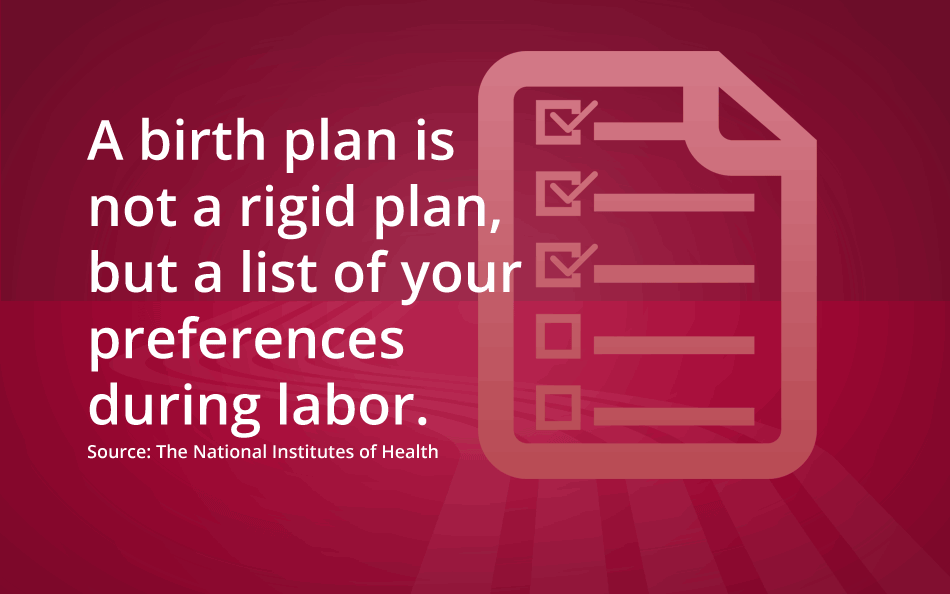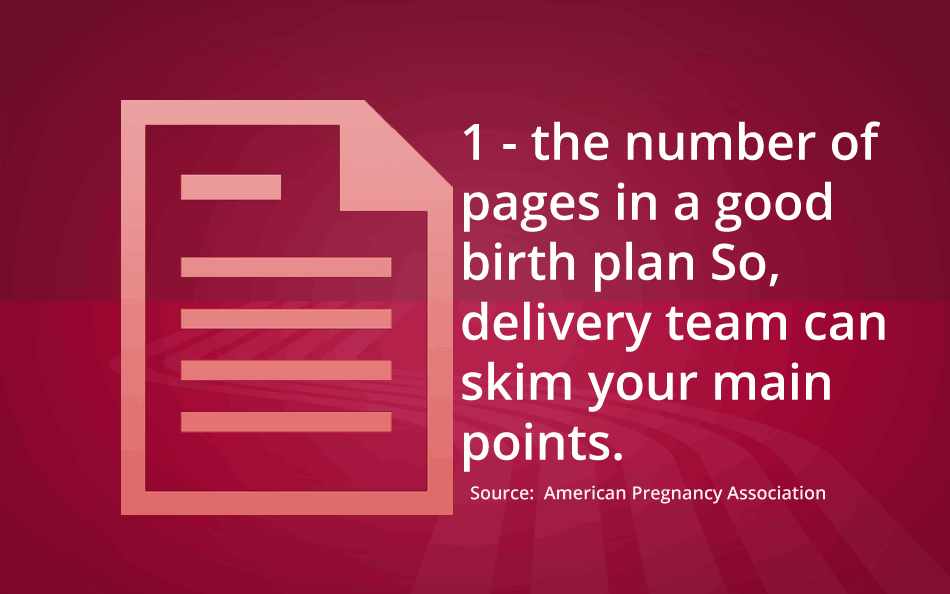You're counting down the months, weeks, and days until you get to meet this wonderful new person that's been growing inside you. But have you thought about the details of that day?
This can seem overwhelming, especially for first-time moms. That's where a birth plan comes in.
What Is A Birth Plan?

A birth plan is not a rigid plan, but a list of your preferences during labor.
A birth plan is not a magical tool that guarantees a delivery just as you imagined it. Rather, it's a document that communicates your birthing preferences to your delivery team.
It's important to stay flexible. The actual labor and delivery can be very different than what you imagine. This could be because you change your mind or because of medical necessity.
So Why Write A Birth Plan?
The process of writing a birth plan is very valuable. Here are 3 reasons why:
- To Do Research Prior to Delivery
Assembling the crib, practicing how to use the car seat, and sending thank you notes to friends who sent you gifts—a new mom-to-be has a lot of tasks on her plate that are not related to labor and delivery.
Writing a birth plan will bring to light the things that need thought or discussion before the contractions start:
- Who you would like in the birthing room? Check your hospital's policy on the number of people allowed in the room. Be sure to communicate your decision to family and friends. This will avoid any surprise guests.
- Do you want to save or donate cord blood or tissue? You may want to bank cord blood or tissue. Do your research. If you choose to save it, select a cord blood bank ahead of time. You will receive a kit that you need to take to the hospital when you give birth, according to Viacord, a large cord blood bank in the US.
- Who will be your baby's pediatrician? You may want to discuss vaccinations, circumcision, and other newborn questions with your child's pediatrician.
- To Be On the Same Page
Written plans leave less room for misunderstanding between you, your partner and your delivery team.
It's a good idea to involve whomever will be in the delivery room with you. This way that person can be fully aware of your preferences and speak up for you. You'll obviously be too busy to speak up for yourself.
You also want to talk to your doctor or midwife while creating your plan. They can tell you if your preferences are realistic and discuss any risks or limitations. For instance, whether your insurance will cover certain options and if the hospital can accommodate them. Topics to discuss include:
- What type of birth you are planning. If you want a water birth, check with the hospital to see if it can accommodate that. If you want a natural birth, talk with your obstetrician or midwife about a contingency plan if a c-section is needed.
- What methods or medications you want for pain relief and moving the birth along. Obstetricians will only let you go a certain number of days before inducing. Be clear on what you want and what you don't want.
Talk to your obstetrician or midwife about induction procedures and pain management options.

1 - the number of pages in a good birth plan So, delivery team can skim your main points.
Source: American Pregnancy Association
If you are a new mom, you may want to talk to other moms about their experience. But keep in mind that everyone has different pain thresholds and preferences.
- How your baby will be handled. Talk to your obstetrician or midwife about your feelings on the use of forceps or vacuum and the hospital's policy on fetal monitoring.
- To Feel More Confident and In Control
The thought of labor can be scary, especially for first-time moms. Thinking through a plan will give you more confidence when you go into labor. It gets you thinking about details that you might otherwise forget or leave until the last minute.
Examples of details to include:
- Who will cut the umbilical cord
- If you want the baby placed on your chest immediately after delivery
- If you choose to breastfeed and when you want to start
- If you want the baby to stay with you after delivery
- If it's ok to feed the baby formula
- If it's ok to use a pacifier
Where Do I Begin?
A good place to start is by writing down your thoughts and plans for the day, says the American Pregnancy Association. This will clarify what matters most to you.
Some doctors, midwives, and hospitals have templates. You can even just write it up as a list. Use whichever style works best for you.
The exact details of your plan may not be followed 100%, and that's ok. Remember that the process of writing your plan is what's most valuable. The main goal of delivery day is to keep you safe while bringing a healthy new baby into this world.
$webqFacilityNumber
Need a Physician?